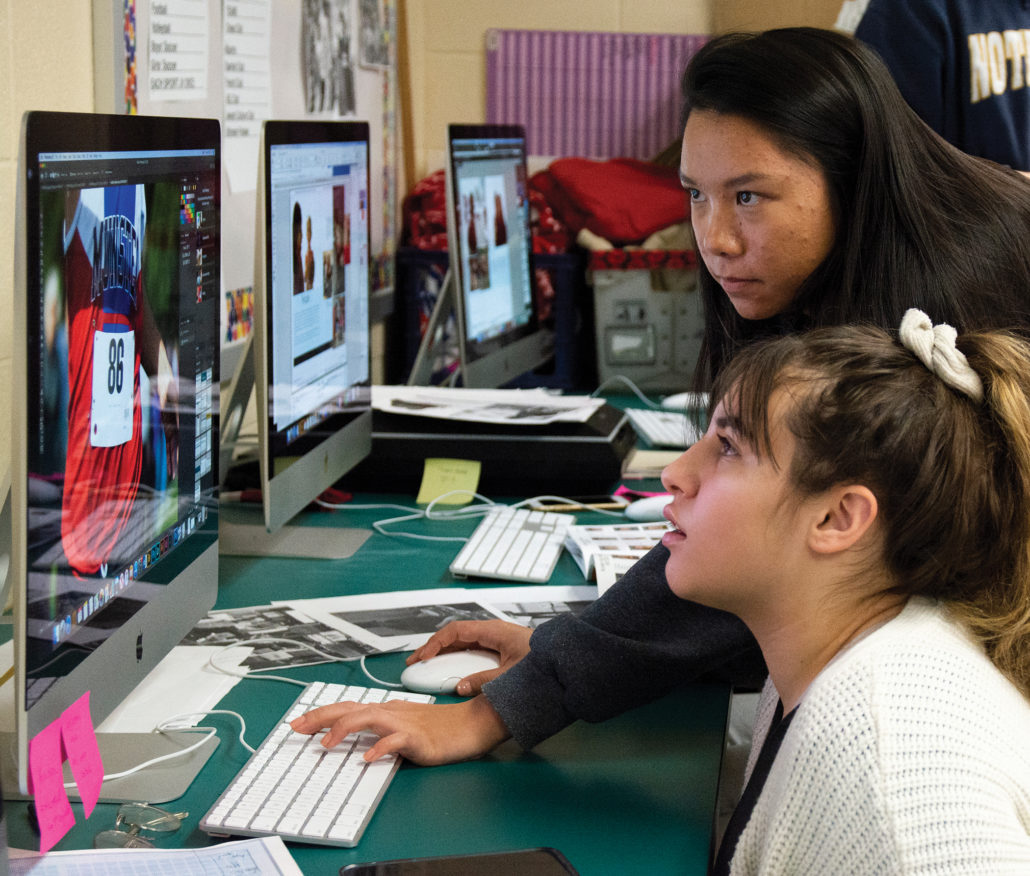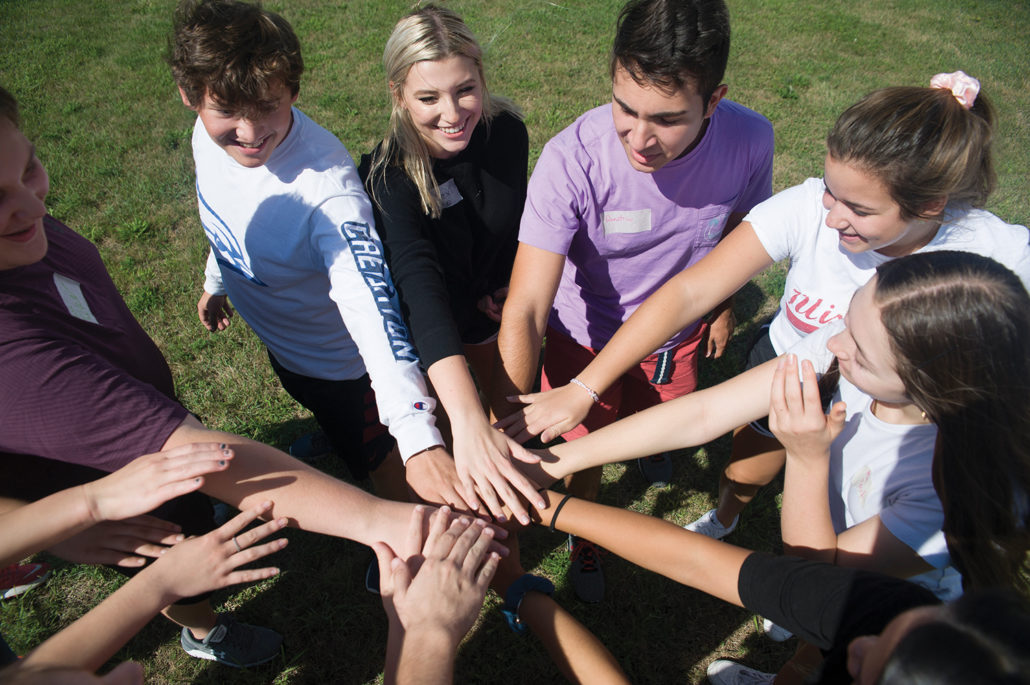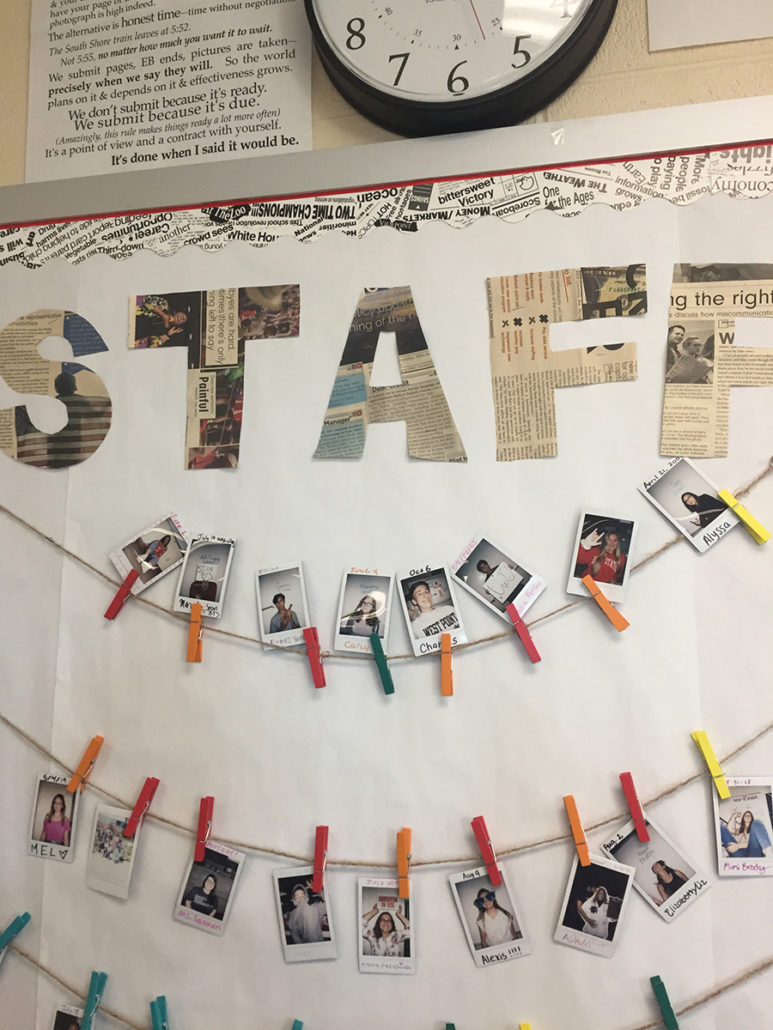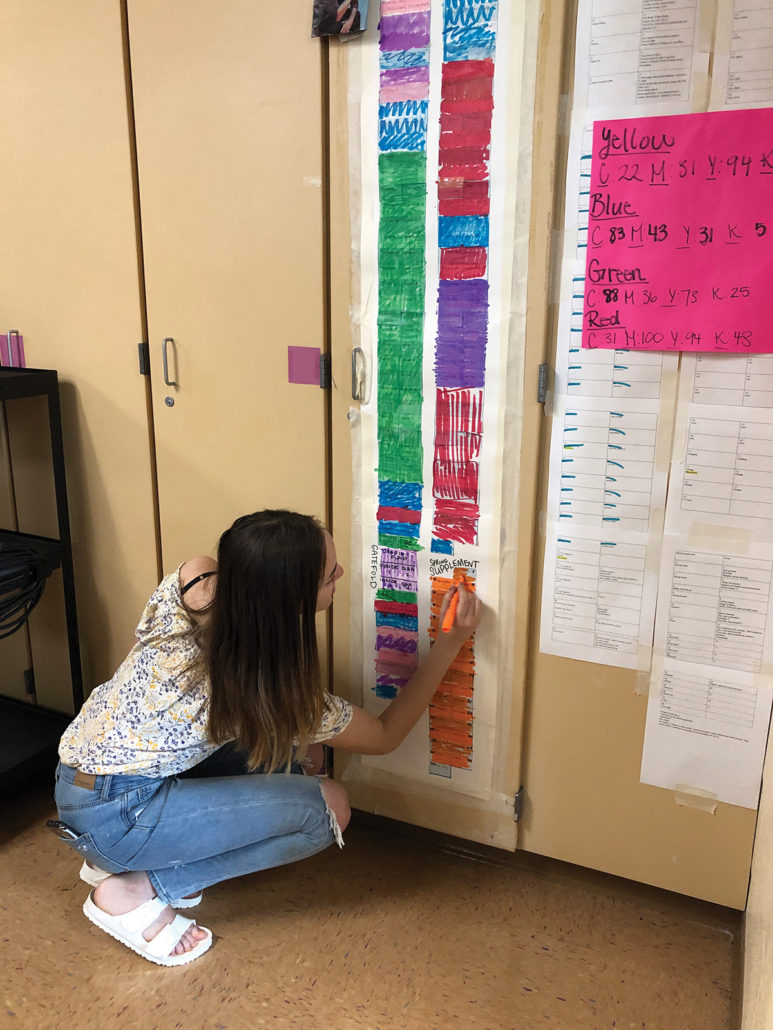SPRING FORWARD
What you can do to help your staffers become the leaders you need
All of my good ideas have come from my students. Usually, my best ones are pretty basic. As basic as suggesting we order one or two more pizzas for deadline dinner or we need two or three more days to work on editing those spreads. The big structural changes to my program and its yearbook, Paragon, started with a student leader coming to me and saying, “Can we talk? I have an idea.”
Student leadership is essential to any successful program. It doesn’t (and shouldn’t) only come from your top editors. All your staff members need to learn how to take the lead.
It’s a daily effort to get students to a point where they know their voice matters in the yearbook room.
Although we’re nearing the end of the year, there are day-one things to make it easier for all staff members to feel that they can make an impact — and have each voice heard. Because of this, it makes it easier for me to transition from one editor to the next each year.
As adviser, I am a warm, welcoming fire. You want to make yourself a positive presence in the room — someone who is always leading by example. If I don’t act as if I want to be there, no one will want to be there.
When it doesn’t go well, I let them know where I messed up. During critique, I ask questions (“Did I maybe not teach you enough about captions?”) or I say what I wish I’d done better. Another thing about that fire? It’s the one in my belly — a passion for yearbook.
I don’t just want Paragon to be great for viewing on distribution day, or just for seniors, but I always talk about how that story will sound in 20 years. Our guiding principle is always what’s best for the book, for history and for the reader.
But, fire is also powerful, and it can hurt, so don’t mess around. The best thing I do for my editors is help them set a high standard and then hold them to it. At critique, or just during the day-to-day drudgery of deadlines, leaders should be publicly applauding what’s great and privately encouraging all their staffers to make so-so work even better.
The torch must be passed from editor to editor by the students themselves.
Whenever it gets to the end of the year, I put out applications for all the possible staff positions, and schedule interviews after school.
The application asks questions like “What is something on Paragon that you think can be improved?” and “What’s a problem you’ve faced, and how did you solve it?” At the interview, which my senior editors run while I take notes, we ask about things like how applicants would describe their leadership style and how they envision the staff fitting together next year.
Both the applications and the interviews matter. But what matters nearly as much is the opinion of the outgoing editor: Who’s been leading by example all year long? Who could handle the stress that comes with leadership? I deeply respect what my outgoing editors have to tell me about the staff they’ve trained.
When the decision is made, there are only two more things to do:
- 1) Take notes for next year. I assign seniors to write letters to the future members of the publications department, so their knowledge doesn’t leave with them. We know the most about our systems at the end of the year. Pulling notes out on day one of the next year will help you and your editors build on previous successes.
- 2) Have some fun. The new positions are announced at our annual banquet, which is held at a local restaurant. Staffers dress up, create gifts for each other, bestow awards and applaud as the new editor positions are announced.
I think my most important role in all of this is having confidence in my students. Trust your editors to know what to do once trained.
SARAH-ANNE LANMAN, CJE
Munster HS • Munster, IN

WHEN STUDENTS TEACH PEERS, like Vanessa showing Lucy how to cut out a background in Photoshop, both staffers become stronger at skills needed and they establish relationships. PHOTO BY CHLOE LAMBERT

TAKING TIME FOR FUN, the Paragon staff teams up to play kickball against the Crier newspaper staff. PHOTO BY TODD McKECHNIE

WELCOMING VISITORS, a display of staff Polaroids and birthdays is a time-honored tradition. PHOTO BY SARAH-ANNE LANMAN

STAFFERS CELEBRATE the completion of a spread by coloring in the ladder. PHOTO BY SARAH-ANNE LANMAN
Working the room
The physical space of your room should reflect how student leadership comes first.
EVERYONE FACES EACH OTHER
Flexible seating is essential to discussion. We have what we call “the U” (because the tables fit together to look like the letter). When we have big class discussions, no one’s back is ever to another staff member. But for smaller meetings, chairs can move to the center of “the U” to facilitate closer conversations. As you — or even better, your editor — decide the seating chart, place newer or more cautious staffers with more experienced ones.
HAVE A STAFF BOARD
Staffers must take a Polaroid photo to post on the staff board. They write their names and birthdays on the edges. We have a really handy space right when you walk in the room that tells our names, reminds us to celebrate birthdays and shows visitors who the staff is.
COLOR THE LADDER
On our submission nights — which can drag on — once I hit submit on the Herff Jones website, we have a very specific ritual. First, we get out our special set of Mr. Sketch markers and decide the color of that deadline. Then someone picks a pump-up song as our soundtrack. Finally, and most importantly, we announce each spread and who worked on it — and then they get to color in those boxes on the ladder while their fellow staffers cheer them on.
